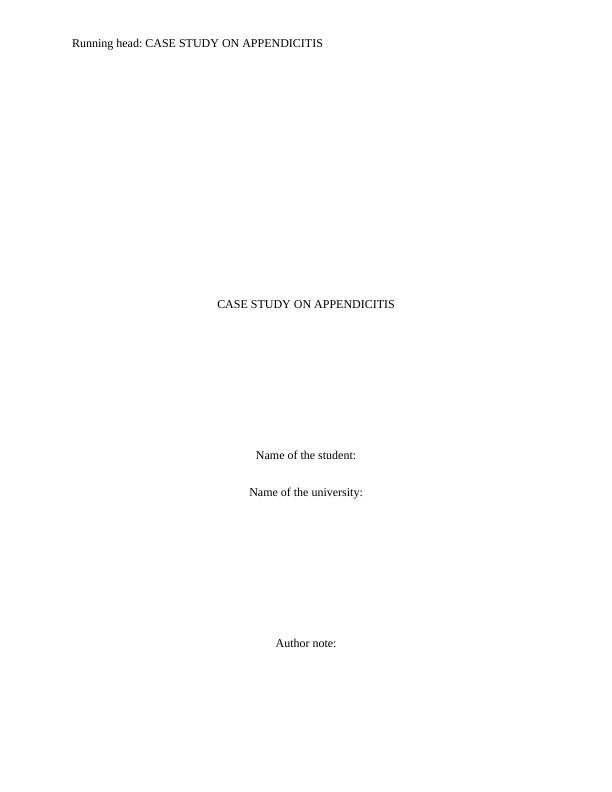Case Study on Appendicitis
8 Pages2307 Words457 Views
Added on 2023-06-08
About This Document
This case study discusses the effects of appendicitis on pediatric patients, developmental theories, family-centered care, and the impact of hospitalization.
Case Study on Appendicitis
Added on 2023-06-08
ShareRelated Documents
End of preview
Want to access all the pages? Upload your documents or become a member.
Appendicitis and Peritonitis: Nursing Interventions for Child Patient
|10
|2853
|333
Paediatric Case Study on Acute Appendicitis and Nursing Care
|8
|2564
|410
(PDF) Clinical Approach in the Diagnosis of Acute Appendicitis
|9
|2652
|57
Pathophysiology of Appendicitis and Developmentally Appropriate Nursing Care
|10
|2842
|68
Child, Adolescent and Family Nursing
|10
|2797
|131
(Solution) Nursing Assignment
|8
|2221
|181



